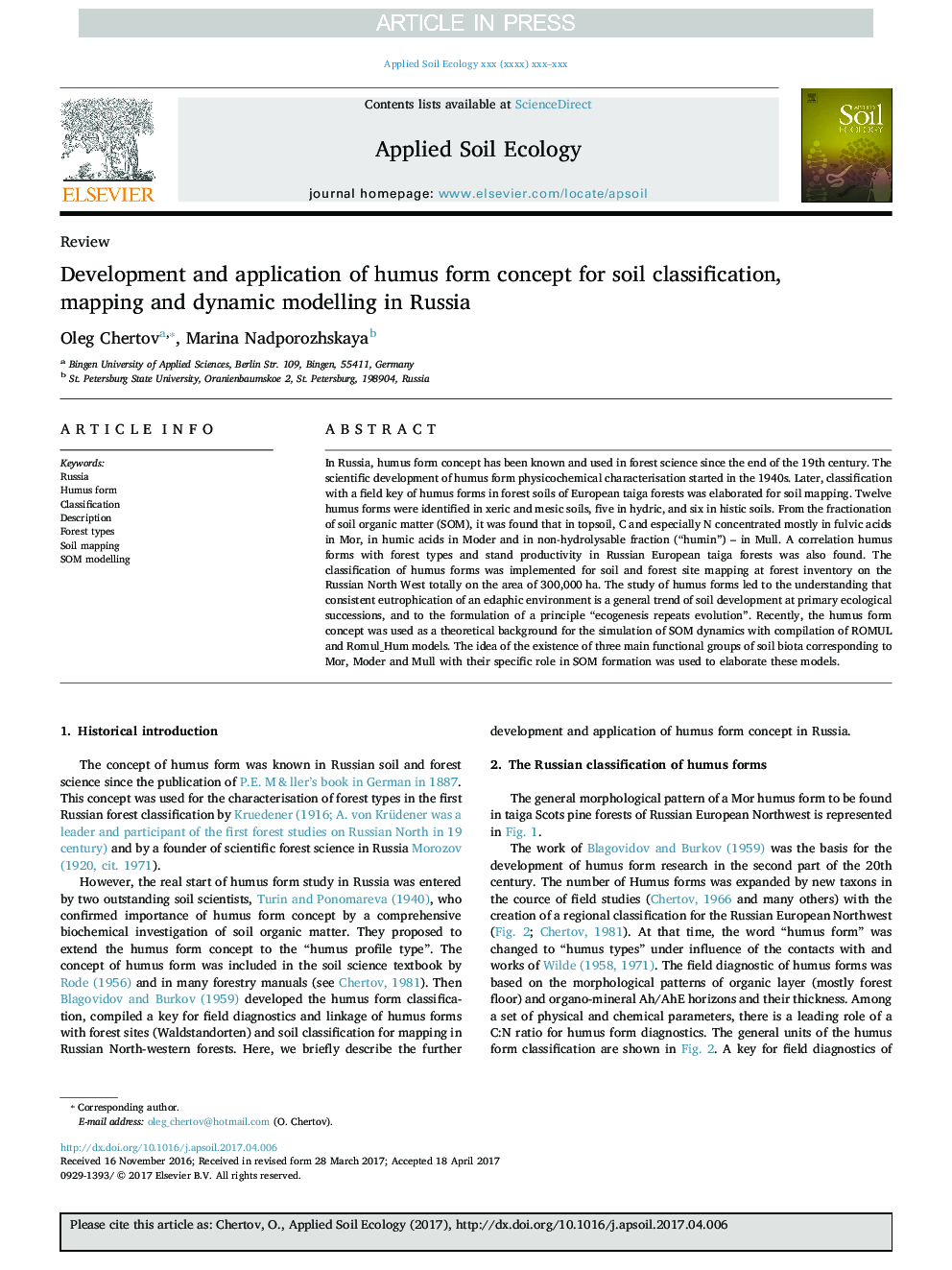| کد مقاله | کد نشریه | سال انتشار | مقاله انگلیسی | نسخه تمام متن |
|---|---|---|---|---|
| 8846840 | 1617760 | 2018 | 4 صفحه PDF | دانلود رایگان |
عنوان انگلیسی مقاله ISI
Development and application of humus form concept for soil classification, mapping and dynamic modelling in Russia
ترجمه فارسی عنوان
توسعه و کاربرد مفهوم فرم هوموس برای طبقه بندی خاک، نقشه برداری و مدل سازی پویا در روسیه
دانلود مقاله + سفارش ترجمه
دانلود مقاله ISI انگلیسی
رایگان برای ایرانیان
کلمات کلیدی
موضوعات مرتبط
علوم زیستی و بیوفناوری
علوم کشاورزی و بیولوژیک
بوم شناسی، تکامل، رفتار و سامانه شناسی
چکیده انگلیسی
In Russia, humus form concept has been known and used in forest science since the end of the 19th century. The scientific development of humus form physicochemical characterisation started in the 1940s. Later, classification with a field key of humus forms in forest soils of European taiga forests was elaborated for soil mapping. Twelve humus forms were identified in xeric and mesic soils, five in hydric, and six in histic soils. From the fractionation of soil organic matter (SOM), it was found that in topsoil, C and especially N concentrated mostly in fulvic acids in Mor, in humic acids in Moder and in non-hydrolysable fraction (“humin”) - in Mull. A correlation humus forms with forest types and stand productivity in Russian European taiga forests was also found. The classification of humus forms was implemented for soil and forest site mapping at forest inventory on the Russian North West totally on the area of 300,000Â ha. The study of humus forms led to the understanding that consistent eutrophication of an edaphic environment is a general trend of soil development at primary ecological successions, and to the formulation of a principle “ecogenesis repeats evolution”. Recently, the humus form concept was used as a theoretical background for the simulation of SOM dynamics with compilation of ROMUL and Romul_Hum models. The idea of the existence of three main functional groups of soil biota corresponding to Mor, Moder and Mull with their specific role in SOM formation was used to elaborate these models.
ناشر
Database: Elsevier - ScienceDirect (ساینس دایرکت)
Journal: Applied Soil Ecology - Volume 123, February 2018, Pages 420-423
Journal: Applied Soil Ecology - Volume 123, February 2018, Pages 420-423
نویسندگان
Oleg Chertov, Marina Nadporozhskaya,
